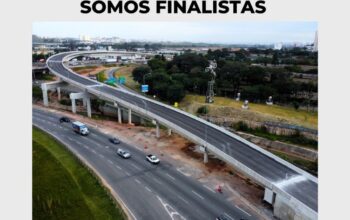Atualmente, um volume da ordem de 4,5 milhões de automóveis circula diariamente pelas ruas da capital. E, como ao longo de décadas o poder público deixou de investir os recursos necessários no transporte público – em todos os seus modais –, esse volume de carros acaba provocando o colapso no trânsito paulistano.
O estudo “Tempo de Deslocamento Casa-Trabalho no Brasil (1992-2009): Diferenças entre regiões metropolitanas, níveis de renda e sexo”, de Rafael Henrique Moraes Pereira e Tim Schwanen, do Instituto de Pesquisa Econômica Aplicada (Ipea), de fevereiro último, identifica o crescimento acentuado da proporção de trabalhadores que faz viagens muito longas no percurso diário casa-trabalho. São viagens com mais de uma hora de duração.
O crescente desperdício de tempo no deslocamento casa-trabalho é 31% maior nas regiões metropolitanas de São Paulo e do Rio de Janeiro em relação às demais regiões. Com 42,8 minutos em média de tempo gasto no deslocamento, o trabalhador metropolitano de São Paulo só perde mais tempo no mundo para o de Xangai, na China (50 minutos). A situação é pior para os mais pobres, que gastam mais tempo no trajeto. A solução envolve investimentos em todos os modais de transporte e também aumento dos corredores de ônibus.
Corredores e faixas exclusivas
A avaliação – e a proposta pelo aumento dos corredores – parece sintonizar-se com a ideia colocada em prática pelo prefeito Fernando Haddad (PT), que está priorizando o transporte por ônibus, numa prevalência direta por espaço com o automóvel particular, como sugere, aliás, a lei que criou o Plano Nacional de Mobilidade Urbana, em vigor desde abril do ano passado. A prefeitura vem avançando os projetos para construção de mais corredores exclusivos de ônibus e, ao mesmo tempo, acelerando a implantação de mais faixas exclusivas nas principais vias da cidade.
Até 2016, a promessa é entregar mais 150 km de novos corredores e 16 terminais, com custo estimado em mais de R$ 6 bilhões. Uma licitação para 68,5 km de corredores, a cargo da Secretaria Municipal de Infraestrutura e Obras, iniciada na gestão anterior, está em fase final e as obras devem começar ainda este ano. Outra licitação, para mais 147 km (dos quais 80 km seriam entregues até o fim da gestão atual, em 2016), desenvolvida pela Secretaria Municipal de Transportes, está em fase final de modelagem e a expectativa é encerrá-la ainda este semestre, para as obras começarem no início do ano que vem. Os novos corredores vão beneficiar fundamentalmente a população que vive nas zonas Leste e Sul, as mais populosas de São Paulo. Hoje, a capital paulista dispõe de dez corredores exclusivos de ônibus, com um total de 119,7 km. Com os 150 km prometidos, a extensão deve chegar a cerca de 270 km. E, nos planos da atual gestão, até 2025, São Paulo somaria 460 km de corredores exclusivos.
Outra medida para melhorar a situação de mobilidade urbana da cidade, com vistas ao ganho de velocidade (e qualidade) da viagem por ônibus, é a “Operação Dá Licença para o Ônibus”, para dar prioridade ao tráfego dos coletivos. Já foram implementadas mais de 80 km de faixas exclusivas (julho), com meta de chegar até o fim do ano com um total de 220 km. Algumas das vias principais da cidade já destinam passagem exclusiva nos horários de pico, como as marginais Pinheiros e Tietê e a avenida Paulista. O objetivo geral da prefeitura paulistana, expresso no Objetivo 16 do Programa de Metas 2013-2016, documento com 100 metas que é a consolidação do plano de governo de Haddad, é “ampliar as áreas de circulação exclusiva e qualificar o sistema de ônibus municipal, aumentando a velocidade média dos horários de pico de 14 km/h (ago./2012) para 25 km/h”. A cidade de São Paulo conta hoje (base junho de 2013) com uma frota de 15.046 ônibus (número praticamente estável nos últimos anos), distribuída em 1.318 linhas. Nas contas da SPTrans, são registrados, em média, 4,5 milhões de cartões do Bilhete Único no sistema municipal de transporte, que realizam 6 milhões de viagens e 9,8 milhões de embarques, por dia útil.

In São Paulo and in its 38 metropolitan municipalities, with over 20 million inhabitants according to the 2010 Census, the most serious problem still is public transportation. According to the most recent Origin-Destination Research conducted in 2007 (the study is conducted every 10 years) in São Paulo’s metropolitan region there were 9.034 million people commuting by bus against 2.223 million by subway and 815 thousand by train. Car commuting summed up 10.381. Out of the total of 38,094 of the daily commuting with a motorized vehicle, 35.9% were done by bus that year.
Currently, 4.5 million cars circulate daily on the streets of that Capital City. And, once for decades the public authority have failed to invest in the necessary resources in public transportation – in all modalities – this number of cars end up by causing the traffic to collapse.
The “Home-Job Commuting Time in Brazil” study (1992-2009): differences among metropolitan regions, income and gender”, by Rafael Henrique Moraes Pereira and Tim Schwanen, with the Institute of Applied Economic Research (Ipea) last February identified significant growth in the percentage of workers who daily commute for long hours from home to their jobs. Usually over one hour.
The growing waste of time commuting from home to job is 31% bigger in the metropolitan regions of São Paulo and Rio de Janeiro related to the remaining regions. Spending 42.8 minutes on average commuting, metropolitan workers of São Paulo only waste more time in t
he world in Shanghai, China (50 minutes). The situation is even worse for the poorer, who spend more time to go to work. Solving the problem involves investments in all modalities of transportation and also an increase in bus-exclusive lanes.
Bus-exclusive lanes and corridors
The assessment – and the proposal for increasing the number of exclusive corridors – seems to be synchronized with the idea put into practice by mayor Fernando Haddad (PT), who has prioritized transportation by bus, which is supposed to have preference in the fight for space on the streets against private cars, as suggests, by the way, the law that created the National Plan of Urban Mobility in force since April last year. The prefecture has implemented projects to build more bus-exclusive corridors and, at the same time, to speed up the implementation of more bus-exclusive lanes on the main streets in the city.
By 2016 the promise is to deliver more 150km of new corridors and 16 terminals, with of over R$6 billion investments. A tender for 68.5km of corridors to be held by the Municipal Department of Infrastructure and Construction Work, which was created in the previous government, is at its final phase and the construction work is expected to start still this year. Another tender for more 147km (out of which 80km should be delivered until the end of the current governor’s term, in 2016), developed by the Municipal Department of Transportation, in undergoing its final phase of modeling and it is expected to end still this semester so that the construction starts at the beginning of next year. The new corridors will essentially benefit the population leaving the eastern and southern regions, those with the highest number of inhabitants. Today São Paulo city has ten bus-exclusive corridors totaling 119.7 km. With the addition of the 150km promised, it will be about 270km long. And in the plans of the current mayor, by 2025 São Paulo will have 460km of bus-exclusive corridors.
Another action taken to improve the situation of urban mobility in the city targeting on gaining speed (and quality) in a ride by bus is the “Give preference to the bus” campaign, aimed at prioritizing the traffic of public transportation. Over 80km of bus-exclusive lanes have already been implemented (July) and the goal is to reach a total of 220km by the end of this year. Some of the main streets in the Capital City already have bus-exclusive lanes at peak hours, such as the Pinheiros and Tiete marginal roads and Paulista Avenue. The general objective of the mayor, expressed in the Objective 16 of the 2013-2016 Program of Goals, a document containing 100 goals which is the consolidation of Haddad’s plan of government, is to “increase the area with exclusive circulation and qualify the municipal bus system, increasing the average speed at peak hours from 14km/h (Aug/2012) to 25km/h”. The city of São Paulo today has (June 2013) a 15,046 bus fleet (a virtually stable figure for the last years) distributed into 1,318 bus lines. According to SPTrans’ accounts, 4.5 million on average of the so-called “Bilhete Único” (Single Ticket) are recorded in the municipal transportation system, which stands for 6 million trips and 9.8 million passengers every business day.
Fonte: Revista O Empreiteiro







